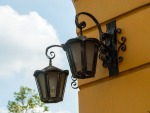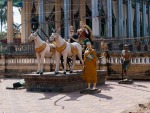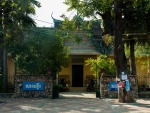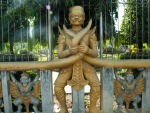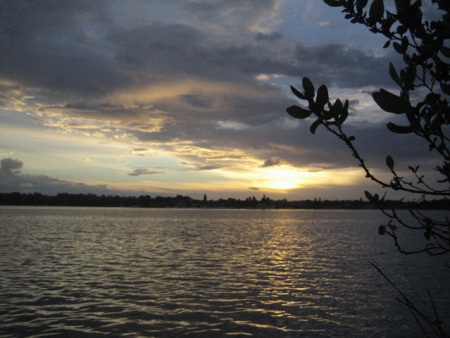During our stay in Battambang we decided to explore the city by following the free walking tour produced by the Battambang Municipality.
Along the walking tour the city’s French and Khmer history is seen in building’s architectural style.
Whilst interesting, having arrived from the Angkor region, the city was a little underwhelming.
The walking tour is broken into two parts, Central Battambang and South Battambang.
Central Battambang
- Wat Pipetharam
- Building of the Cantonese Association
- Psar Nath
- Shophouses next to the Chinese Temple
- Chinese Temple / Chinese Spirit House
- Corner Building and Villa
- Street 2 ½: Series of Shop Houses
- Chinese School (opposite of White Rose Restaurant)
- Buffalo Alley
- Battambang Cinema (on Street 2)
- School Pi Thnou
- Apartment Building
- Sangker Cinema and Battambang Warehouse
- Department of Land Management
- Wat Damrey Sor
- Former canal south of Wat Damrey Sor
thydzikgooglemap(http://sonyaandtravis.com/maps/battambang-central-walking-tour-cambodia.xml)
South Battambang
- Exhibition Hall
- Provincial Museum
- Boxing Stadium (Sports Ground)
- Post Office
- Electricity Company and Department of Water Authority
- House for the Vice Governor of Battambang
- Provincial Court
- Former Prison Location
- Wat Kamphaeng and Stupa of 1840
- Kamphaeng High School
- Sport Centre (Au Circle Sportif de Battambang)
- Sala Khaet
- Royal Residence (Royal Bungalow)
- Department of Tourism
- First Concrete Bridge
thydzikgooglemap(http://sonyaandtravis.com/maps/battambang-south-walking-tour-cambodia.xml)
You may download GPX way-points of the above maps by clicking on the GPS icon in the bottom-right corner.
Unfortunately, the Battambang Heritage website is temperamental, you can use these links to download the Central Walking Map and South Walking Map.


















































































































